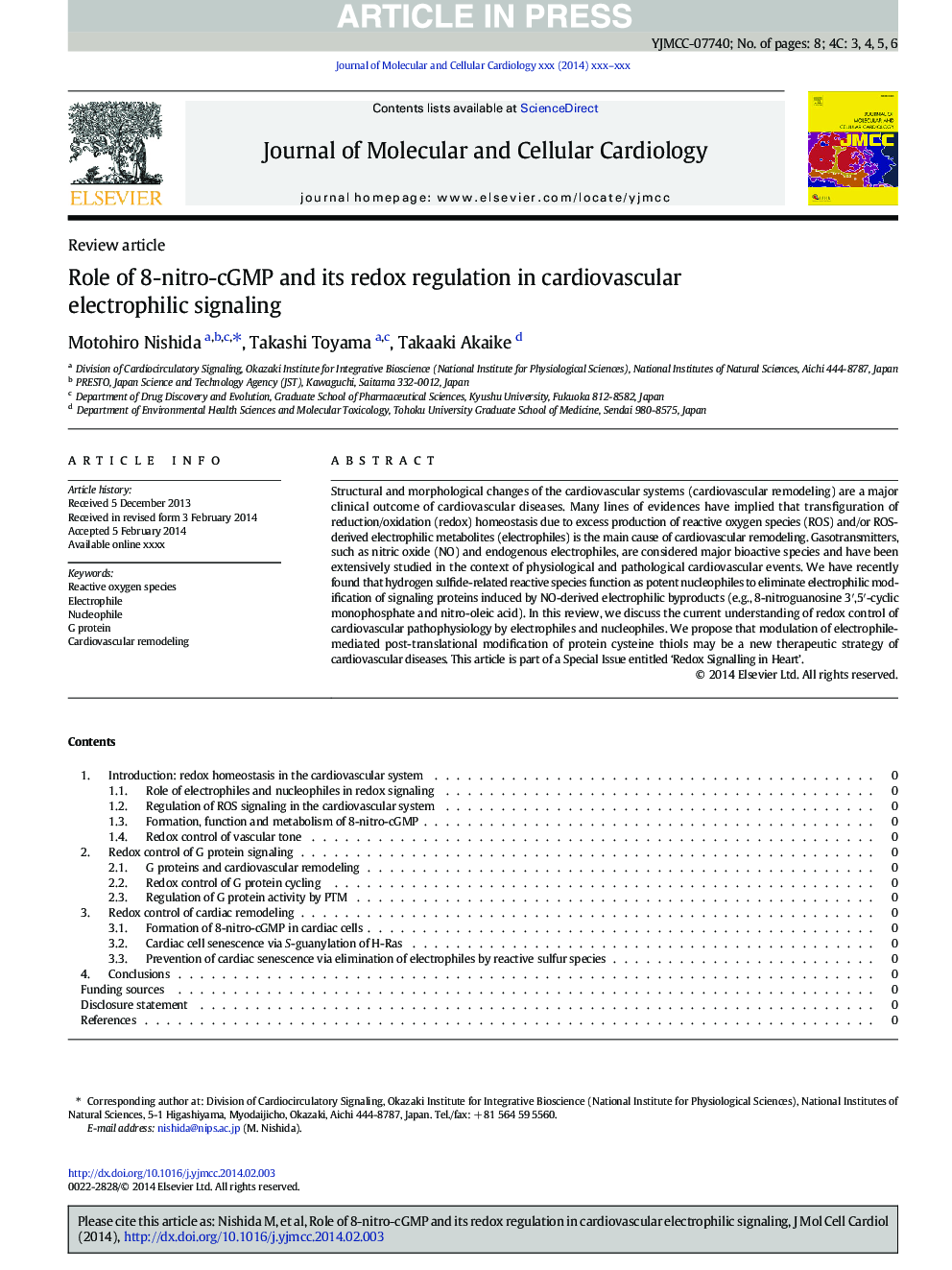| Article ID | Journal | Published Year | Pages | File Type |
|---|---|---|---|---|
| 8474783 | Journal of Molecular and Cellular Cardiology | 2014 | 8 Pages |
Abstract
Structural and morphological changes of the cardiovascular systems (cardiovascular remodeling) are a major clinical outcome of cardiovascular diseases. Many lines of evidences have implied that transfiguration of reduction/oxidation (redox) homeostasis due to excess production of reactive oxygen species (ROS) and/or ROS-derived electrophilic metabolites (electrophiles) is the main cause of cardiovascular remodeling. Gasotransmitters, such as nitric oxide (NO) and endogenous electrophiles, are considered major bioactive species and have been extensively studied in the context of physiological and pathological cardiovascular events. We have recently found that hydrogen sulfide-related reactive species function as potent nucleophiles to eliminate electrophilic modification of signaling proteins induced by NO-derived electrophilic byproducts (e.g., 8-nitroguanosine 3â²,5â²-cyclic monophosphate and nitro-oleic acid). In this review, we discuss the current understanding of redox control of cardiovascular pathophysiology by electrophiles and nucleophiles. We propose that modulation of electrophile-mediated post-translational modification of protein cysteine thiols may be a new therapeutic strategy of cardiovascular diseases. This article is part of a Special Issue entitled “Redox Signalling in the Cardiovascular System”.
Related Topics
Life Sciences
Biochemistry, Genetics and Molecular Biology
Cell Biology
Authors
Motohiro Nishida, Takashi Toyama, Takaaki Akaike,
